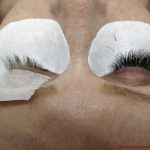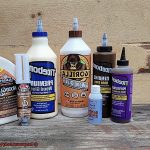Step into the world of crafting and adhesives, where we’re about to tackle a question that’s been buzzing among DIY enthusiasts and artisans alike: Can you use Gorilla Glue on resin? If you’re someone who loves working with resin and wants to take your creations to new heights of durability and stability, then this article is tailor-made for you.
Resin, with its glossy finish and endless possibilities, has taken the art world by storm. From stunning jewelry pieces to eye-catching furniture designs, the only limit is your imagination. But here’s the catch: finding the right glue for resin can be a real headache. That’s where Gorilla Glue steps in – a name that’s synonymous with top-notch adhesives.
In this all-inclusive guide, we’ll dive deep into the compatibility of Gorilla Glue with different types of resin, including epoxy and polyurethane. We’ll walk you through foolproof adhesion techniques, share some crucial precautions, and showcase jaw-dropping examples of how Gorilla Glue can elevate your resin projects from ordinary to extraordinary.
Whether you’re just starting out or consider yourself a seasoned resin artist, get ready for an adhesive adventure like no other. Together, we’ll unlock the full potential of Gorilla Glue on resin – unleashing your creativity and achieving mind-blowing results that stand the test of time. So buckle up and join us on this thrilling journey.
What is Gorilla Glue?
Contents
Since its introduction to the market in 1994, Gorilla Glue has become a go-to choice for DIY enthusiasts, craftsmen, and professionals alike. Its exceptional strength and versatility make it the ideal adhesive for a wide range of materials and applications.
Gorilla Glue is a polyurethane-based adhesive known for its ability to bond to various surfaces. Whether you’re working with wood, metal, ceramics, stone, glass, or foam, Gorilla Glue can handle it all. From woodworking projects to metalworking endeavors and even intricate crafts, this adhesive is a must-have tool in your arsenal.
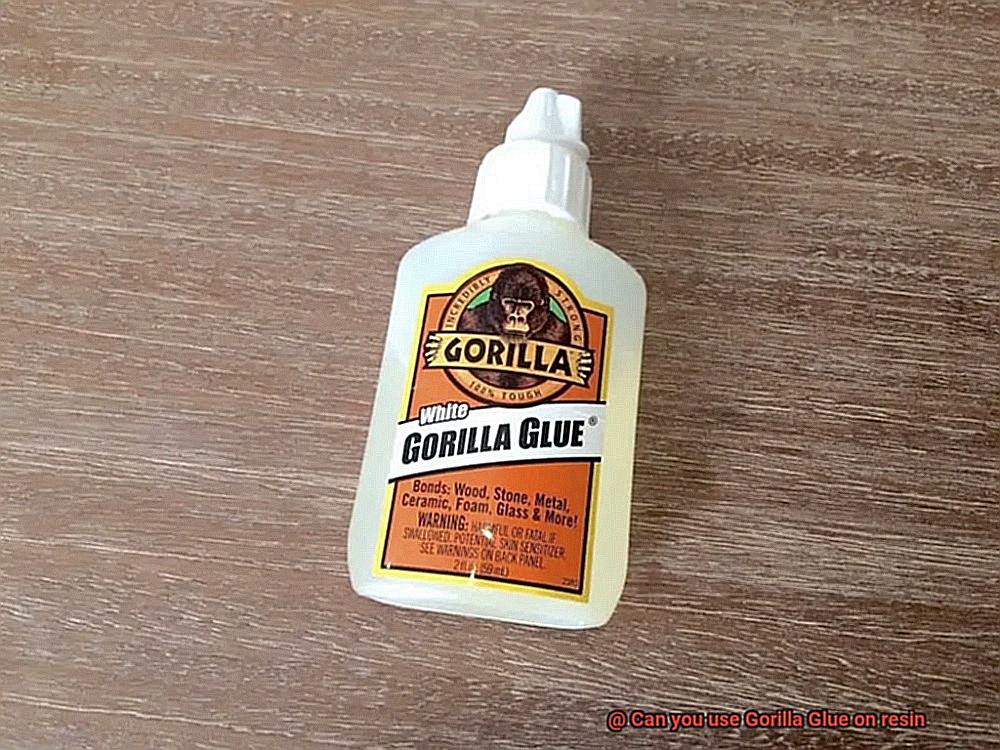
One of the standout features of Gorilla Glue is its incredible strength. It can withstand heavy loads and resist impact and vibration, ensuring that your projects are durable and long-lasting. Unlike other adhesives that may weaken over time, Gorilla Glue expands as it cures, filling gaps and creating a bond that is not only strong but also reliable.
In addition to its strength, Gorilla Glue is also waterproof. This means you can confidently use it both indoors and outdoors without worrying about it losing its effectiveness when exposed to moisture. Rain or shine, Gorilla Glue will hold up even in the harshest weather conditions.
Another advantage of Gorilla Glue is its versatility in terms of form. Whether you prefer liquid glue for larger surface areas, gel glue for more control and precision, or tape for a mess-free option, Gorilla Glue has got you covered. Regardless of the form you choose, the adhesive remains paintable and sandable, allowing you to achieve the desired finish for your project.
While Gorilla Glue offers exceptional bonding capabilities, it is important to handle it with care. The adhesive can be messy and difficult to remove if not used correctly. Therefore, it’s essential to carefully follow the instructions and take necessary safety precautions when working with Gorilla Glue.
Now, let’s address the question that brought you here: can Gorilla Glue be used on resin? The answer is yes, but with some considerations. Resin, known for its glossy finish and durability, can be a challenging material for adhesives to bond effectively. However, certain formulations of Gorilla Glue, such as the original Gorilla Glue or the Gorilla Super Glue, have proven to be successful in bonding resin pieces together or attaching resin to other materials.
To ensure a strong bond between Gorilla Glue and resin, preparation is key. Clean the surfaces thoroughly and roughen them slightly to create a better adhesion surface. Apply the glue sparingly, as excess glue can leave visible residue on the resin. Once applied, hold or clamp the pieces together firmly until the glue dries completely.
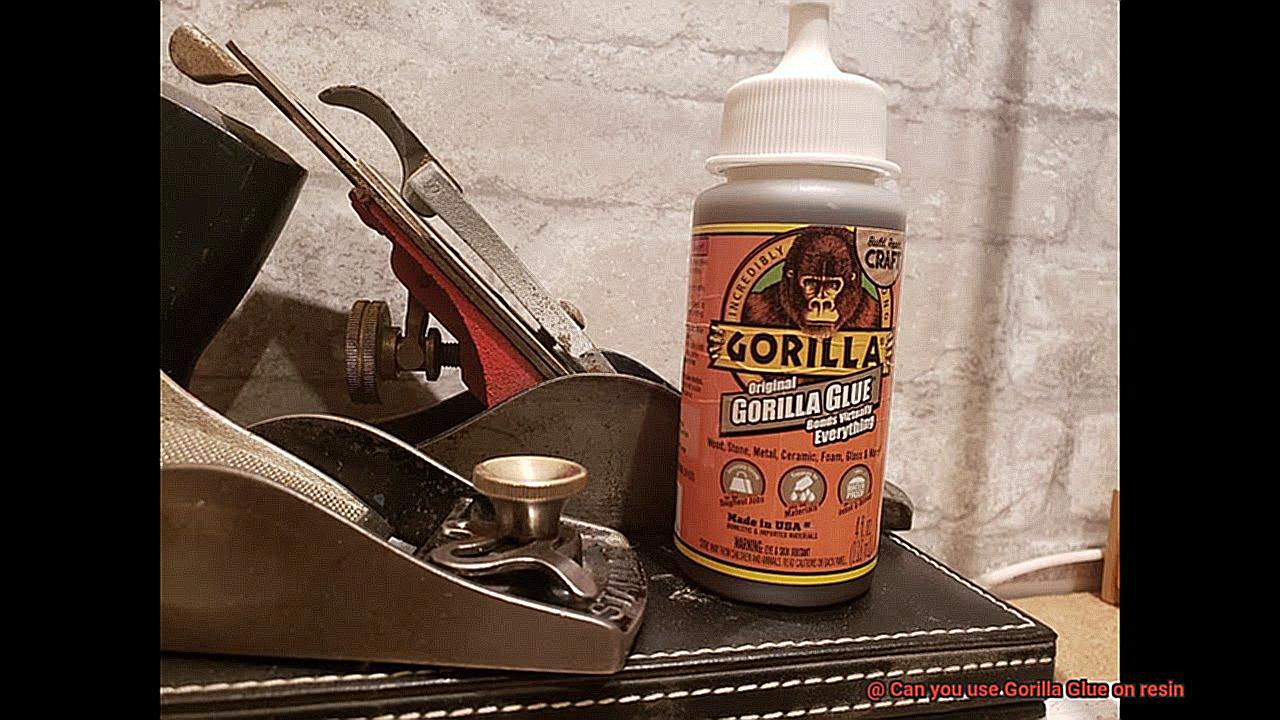
What is Resin?
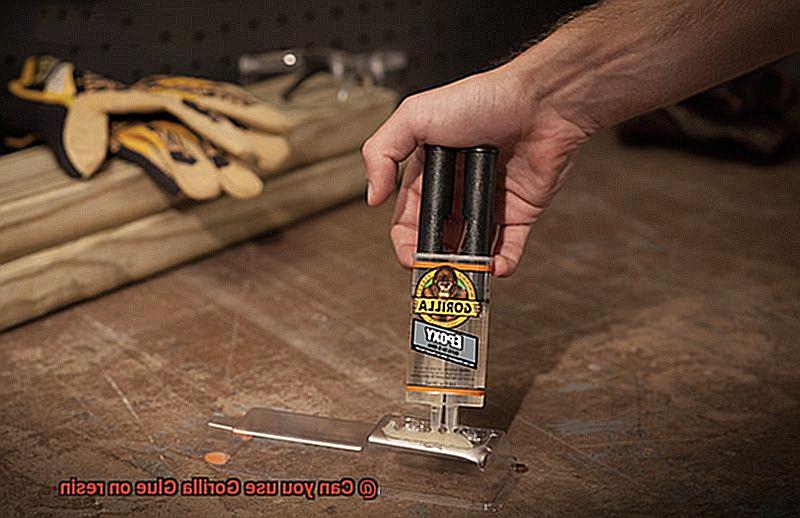
Resin is a remarkable substance that has found its way into numerous industries, from crafts to construction. It is a viscous material that can be either natural or synthetic and hardens when exposed to specific conditions like heat, light, or a catalyst. Let’s take a closer look at the world of resin and its fascinating properties.
Natural resins are derived from plants, particularly trees. They have been used for centuries in various applications, such as varnishes, adhesives, and traditional medicine. Examples include pine resin, damar resin, and shellac. These natural resins are like Mother Nature’s own sticky invention.
Synthetic resins, on the other hand, are man-made materials created through chemical processes. There are different types available today, each with its own unique properties and applications. Epoxy resin, polyurethane resin, and polyester resin are just a few examples. These synthetic wonders have become staples in industries like construction and manufacturing.
One of the main reasons why resin is so popular is its impressive adhesive properties. It can bond different materials together with strength and durability. Whether you’re working with wood, metal, ceramics, or even certain plastics, resin can handle it all.
But not all glues are created equal when it comes to bonding resin. Enter Gorilla Glue – the superhero adhesive that can conquer any challenge. With its high strength and versatility, Gorilla Glue has become the go-to choice for DIY enthusiasts and professionals alike.
However, bonding resin with Gorilla Glue may require a little extra finesse. Resin surfaces can be smooth and non-porous, making it challenging for the glue to adhere properly. But fear not. By properly preparing the surface and using primers or adhesion promoters designed for resin, you can achieve a strong and durable bond.
So, whether you’re a resin enthusiast looking to create stunning crafts or a construction pro in need of a reliable adhesive, resin and Gorilla Glue are a match made in glue heaven. With their powers combined, they’ll hold your projects together like an unstoppable team.
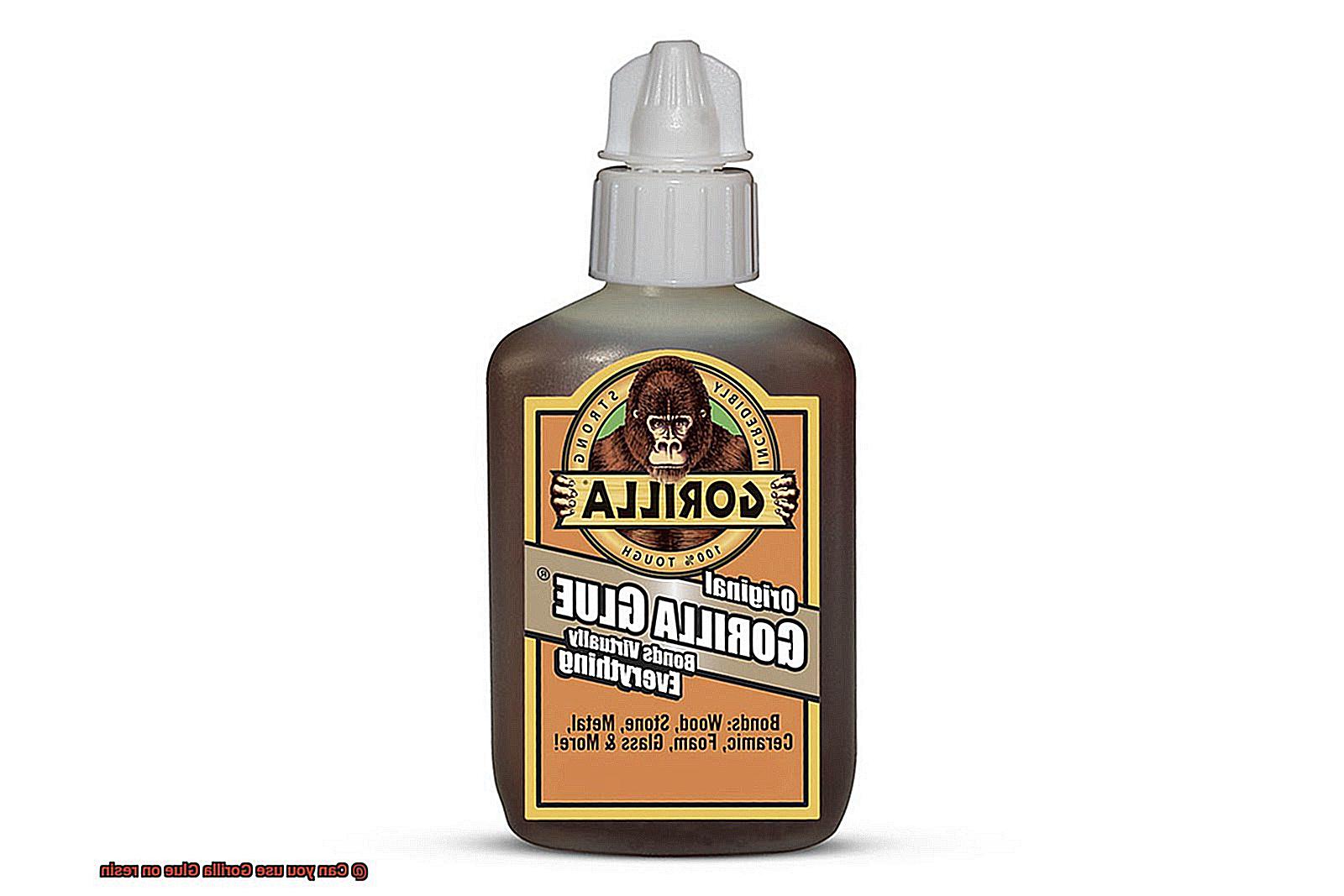
Now that you know the ins and outs of resin, go forth and create amazing things. Just remember, with Gorilla Glue by your side, there’s no project too big or bonding challenge too tough. Stick it together like a pro and let your creativity shine.
Can Gorilla Glue be Used on Resin?
Resin and Gorilla Glue may seem like a match made in crafting heaven, but before you dive headfirst into using Gorilla Glue on resin, there are a few factors to consider. Gorilla Glue is a popular adhesive known for its strength and versatility, but resin is a unique material with its own characteristics. Let’s take a closer look at the pros and cons of using Gorilla Glue on resin.
Firstly, it’s important to understand the properties of both the glue and the resin. Gorilla Glue is a polyurethane-based adhesive that expands as it cures, creating a strong bond. Resin, on the other hand, can be made from various materials such as epoxy, polyester, or polyurethane and cures through chemical reactions or exposure to heat or UV light.
One potential issue when using Gorilla Glue on resin is the expansion during curing. This can create problems when precision and fine details are crucial, such as in crafts or jewelry making. Additionally, some resins may not have enough porosity or moisture content for the glue to cure properly, resulting in a weak bond or no bond at all.
To determine if Gorilla Glue is suitable for your specific type of resin, it’s best to perform a small test. Apply a small amount of glue to a non-visible area of the resin and allow it to cure. Check the bond strength and ensure there’s no unwanted expansion or damage.
It’s worth noting that there are specific adhesives designed for use with resin. These adhesives are formulated to provide a strong bond without causing any damage or unwanted expansion. If Gorilla Glue isn’t suitable for your resin, explore other adhesive options specifically designed for that type of material.
Different Types of Gorilla Glue
Gorilla Glue is renowned for its strength and versatility in the world of adhesives. However, when it comes to bonding resin, not all types of Gorilla Glue are created equal. In this article, we will delve into the various options available and their suitability for resin bonding. Whether you’re a DIY enthusiast or an artist working with resin, read on to discover which Gorilla Glue variant is best for your project.
The Original Gorilla Glue:
The original Gorilla Glue, also known as Gorilla Glue Original, is a polyurethane adhesive that can bond an extensive range of surfaces such as wood, metal, stone, and ceramics. While it excels in strength and versatility, it may not be the optimal choice for bonding resin due to the unique properties of resin materials. Resin requires specific adhesives that are formulated to create a strong bond and ensure long-lasting durability.
Gorilla Super Glue:
Gorilla Super Glue offers instant bonding and is well-suited for materials like plastic, metal, fabric, and more. Although it may provide some adhesion on resin, it may not offer the robust bond required for durable and long-lasting results. When working with resin, it’s essential to choose an adhesive specifically designed for this material to ensure a secure and reliable bond.
Specialized Alternatives:
For woodworking projects involving resin or attaching resin to other materials, consider using Gorilla Wood Glue. This specialized adhesive is formulated specifically for wood surfaces and provides a strong bond without compromising the clarity of the finished project. Another option worth exploring is Gorilla Epoxy, a two-part adhesive ideal for bonding metals, plastics, ceramics, and glass. With its high strength and resistance to water and extreme temperatures, it offers a reliable choice for resin bonding.
Choosing Epoxy Resin Adhesives:
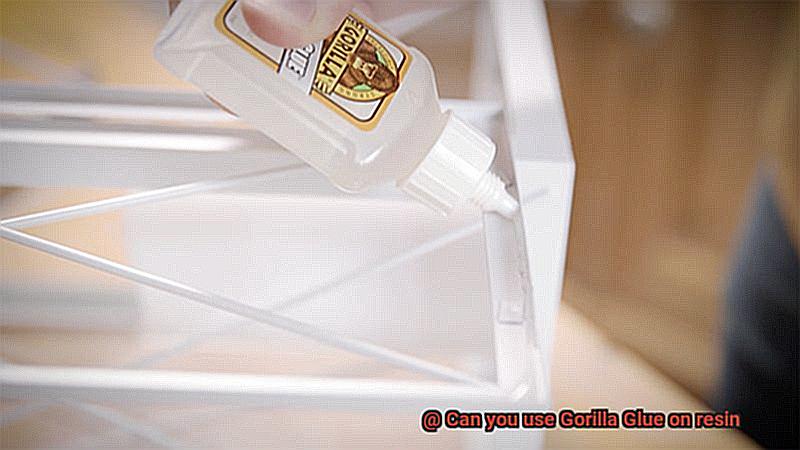
While Gorilla Glue offers options for various materials, it’s crucial to note that resin requires specific adhesives for proper bonding. Epoxy resin adhesives are formulated to provide a strong and durable bond with resin, ensuring longevity and stability. Available in liquid or putty form, these specialized adhesives offer long-lasting bonding solutions for resin-based projects.
Tips for Success:
To achieve optimal results when bonding resin, proper surface preparation is crucial. Clean and roughen the surfaces slightly before applying any adhesive. It’s important to use Gorilla Glue sparingly, as excess glue can leave messy residue on the resin surface. Firmly clamp or hold the pieces together until the glue dries completely for a secure bond. For more challenging resin projects, such as those with a high gloss finish, it may be worth exploring other adhesive options specifically designed for bonding resin materials.
Preparing the Surfaces for Bonding
Creating a strong and durable bond between materials using Gorilla Glue requires proper surface preparation. This crucial step is often overlooked, but it can make all the difference in the success of your project. So, let’s dive into the key steps for preparing surfaces for bonding.
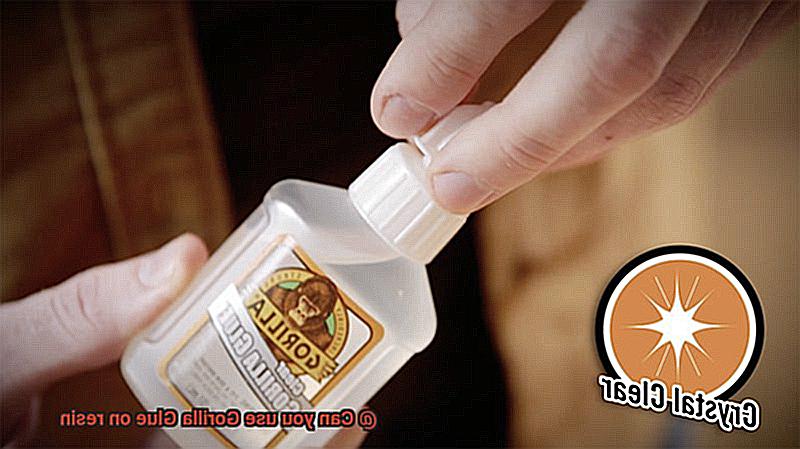
- Clean the surfaces: Start by thoroughly cleaning the surfaces that will be bonded. Use mild detergent or soap mixed with warm water to remove any dirt, dust, or grease that could interfere with the bonding process. Rinse the surfaces thoroughly and allow them to dry completely before proceeding.
- Roughen the surfaces: To improve adhesion and create a stronger bond, gently roughen the cleaned surfaces. Use sandpaper or a sanding block in a circular motion to create a rough texture. Remember to be careful and avoid damaging the resin.
- Remove debris: After roughening the surfaces, wipe away any dust or debris using a clean cloth or paper towel. This ensures a clean surface for the Gorilla Glue to work its magic.
- Apply Gorilla Glue: Follow the instructions on the packaging for application techniques and curing times specific to the Gorilla Glue variant you’re using. Remember, less is more when it comes to glue. Apply a thin layer onto one of the surfaces using a brush or applicator, spreading it evenly and avoiding excess glue.
- Press surfaces together: Align the surfaces properly and firmly press them together. Apply constant pressure for a few minutes to allow the glue to bond effectively. Consider using clamps to maintain consistent pressure during the curing process for an even stronger bond.
- Allow curing time: Give the glue sufficient time to cure, following the recommended curing time provided by the manufacturer. Patience is key for a successful bond.
- Check bond strength: Once the glue has fully cured, check the bond for strength and stability. If there are any weak spots or gaps, apply additional adhesive or reposition the surfaces as needed.
- Remove excess glue: Keep an eye out for any excess glue that may have squeezed out during the bonding process. If you spot any, remove it immediately using a damp cloth or sponge.

Applying the Glue
Today, we are diving into the intricacies of applying Gorilla Glue to resin. Whether you’re a craft enthusiast or a jewelry maker, this comprehensive guide will help you navigate the sticky situation of bonding resin materials.
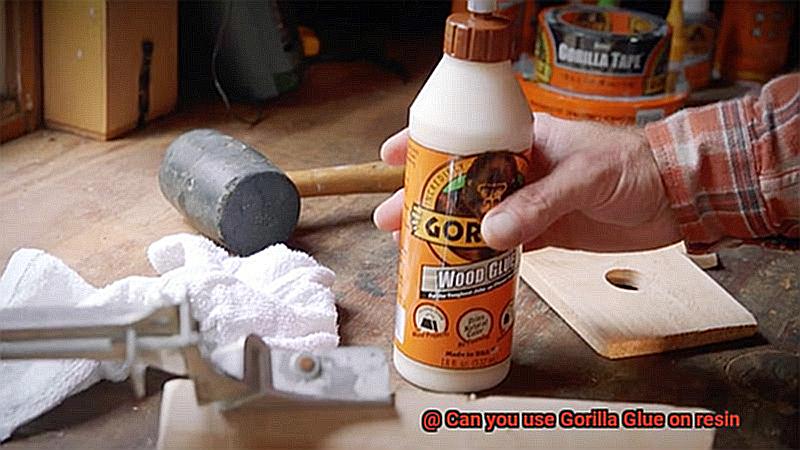
Let’s start with the basics. Gorilla Glue is a powerhouse adhesive renowned for its strength and versatility. It can bond wood, metal, plastic, and more with ease. However, when it comes to resin, things get a bit tricky. Resin, a synthetic material commonly used in crafts, art projects, and furniture-making, is durable, moldable, and often transparent or translucent. But not all glues are created equal when it comes to bonding resin.
Here’s the deal: Gorilla Glue might not be your best bet for resin bonding. Why? Well, it’s a polyurethane-based adhesive that expands as it cures. While this expansion can be advantageous in certain applications, it can cause problems when working with resin. The expanding action can create unwanted gaps or uneven surfaces, compromising the flawless appearance of your project. Additionally, the foaming action of Gorilla Glue can be challenging to control, leading to messy results.
But fear not. There are precautions you can take to improve your bond with resin using Gorilla Glue. First and foremost, use a minimal amount of glue. Less is more in this case. Applying a thin and even layer will help prevent excessive expansion and messiness. Furthermore, remember to clamp or apply pressure during the curing process to ensure a strong bond.
However, if you truly desire optimal results, it’s wise to explore alternative adhesives specifically designed for bonding resin. Specialized epoxy adhesives are available that offer better compatibility and a stronger bond with resin materials. These adhesives are formulated to provide a clear and durable bond without compromising the integrity of the resin.
Clamping the Pieces Together
Achieving a strong and durable bond when working with resin and Gorilla Glue requires proper clamping techniques. Whether you’re a seasoned resin artist or just starting out, understanding the importance of clamping will take your projects to the next level.
Selecting the right clamps:
Choosing the appropriate clamps is the first step in successful clamping. For smaller and delicate resin pieces, opt for spring clamps or mini bar clamps. These provide gentle and even pressure, preventing damage to the resin. Larger projects or thicker resin pieces may require C-clamps or pipe clamps, which offer a stronger grip and more pressure.
Preparing the surfaces:
Before applying Gorilla Glue, clean both surfaces thoroughly to remove dust, oil, and debris. This ensures better adhesion between the resin and glue. Lightly sanding both surfaces creates a rougher texture, enhancing adhesion.
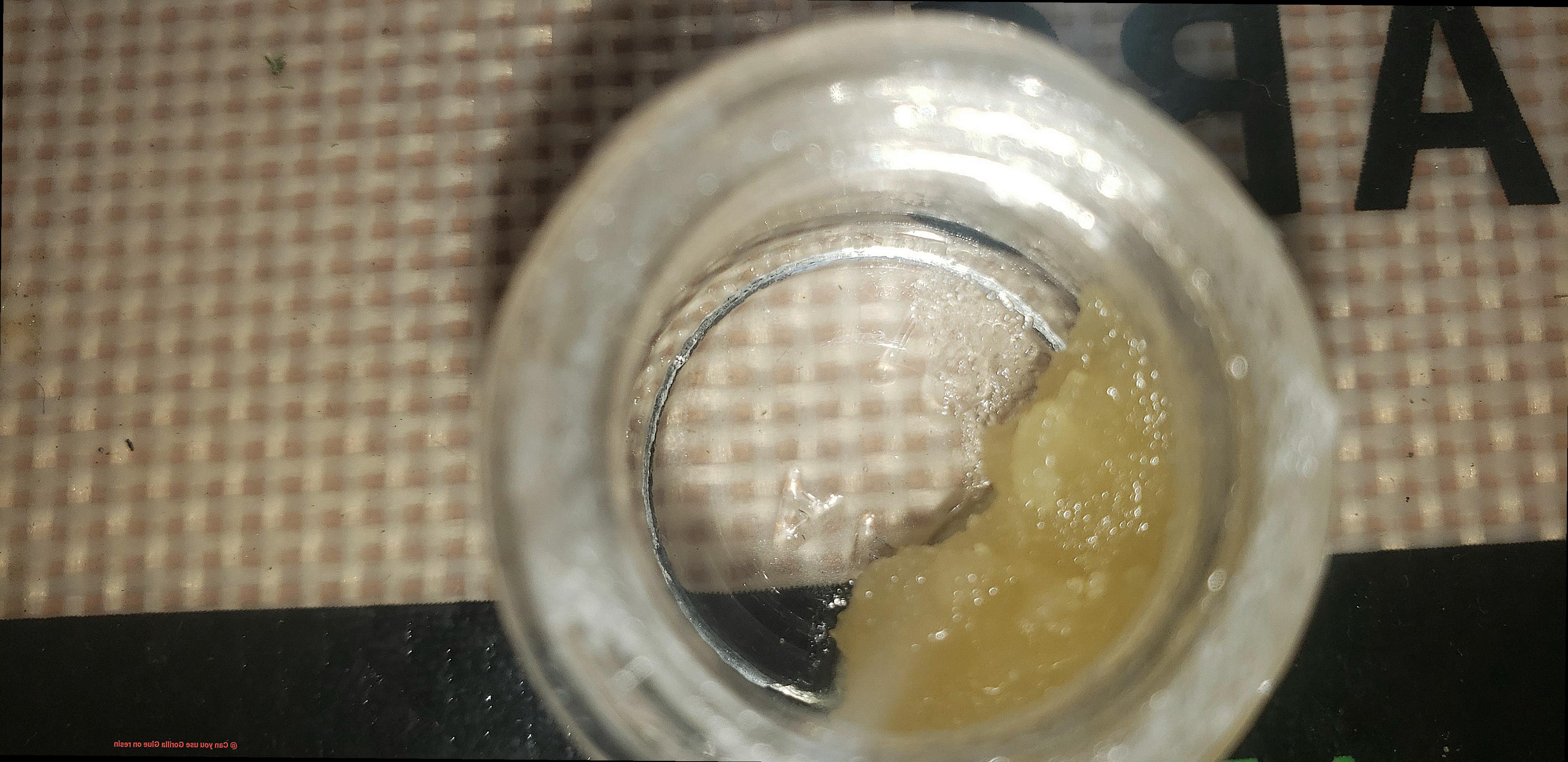
Applying the glue:
Use a thin layer of Gorilla Glue evenly across one of the resin pieces. Avoid excess glue that can create a messy finish. Join the two resin pieces immediately after applying the glue.
Clamping technique:
Apply even pressure along the entire joint area to distribute the glue evenly and prevent gaps or weak spots. Protect the resin surface by placing a scrap wood or protective layer between the clamps and resin.
Finding the right balance:
Tighten the clamps firmly enough to hold the pieces together without excessive force that could deform or crack the resin. Follow manufacturer guidelines for appropriate pressure.
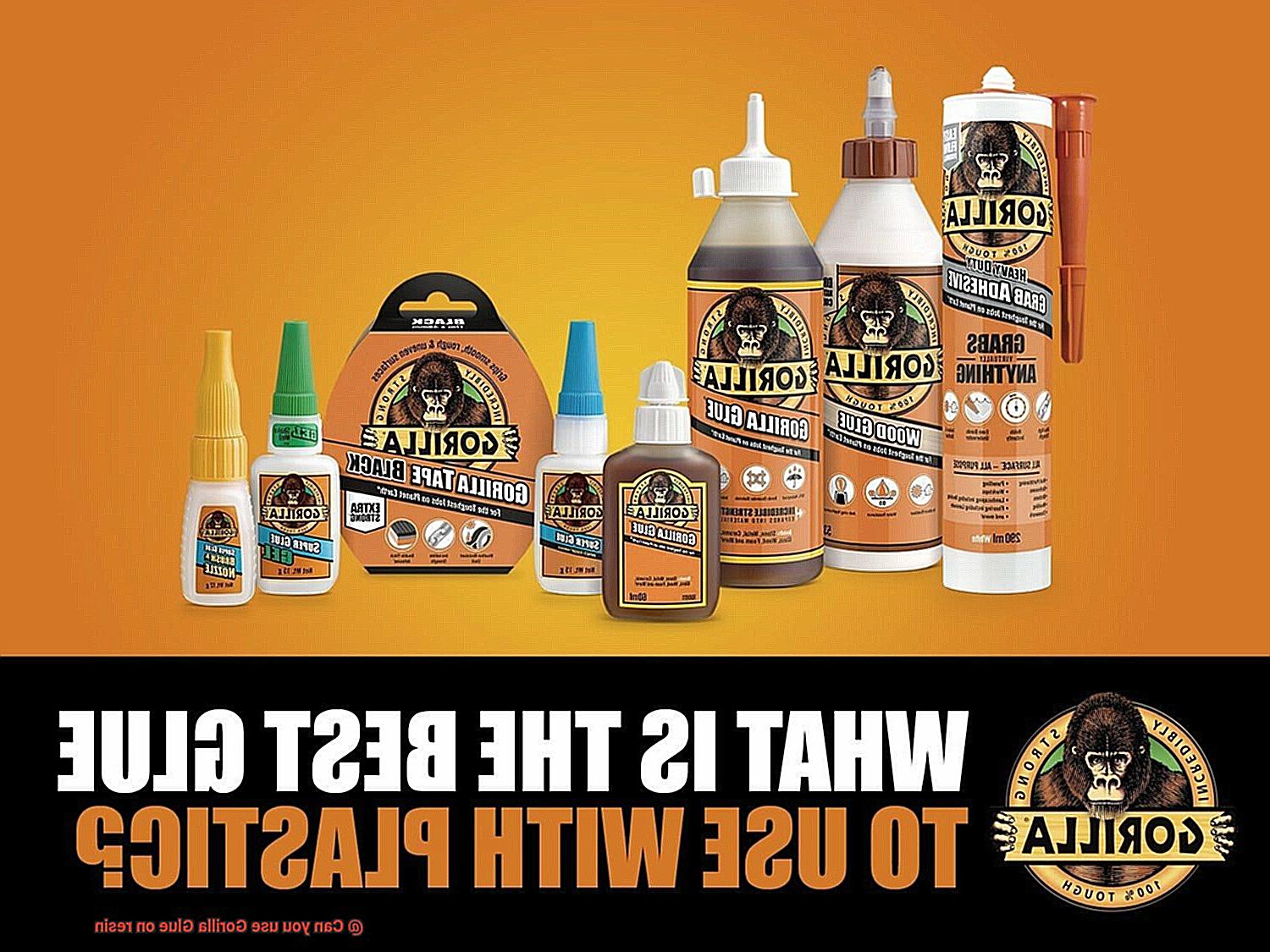
Allowing sufficient curing time:
After clamping, give the glue sufficient time to cure based on manufacturer recommendations. Avoid disturbing or moving the clamped pieces during this period to ensure a strong bond.
Special Considerations
When it comes to bonding resin materials, Gorilla Glue is a popular choice known for its strong and reliable adhesion. However, before diving into your project, there are a few special considerations to keep in mind. In this article, we will explore the key factors that will help you achieve a rock-solid connection between Gorilla Glue and resin.
Understanding the Type of Resin:
Resin can come in different forms – epoxy, polyester, or polyurethane. Each type has its unique chemical composition and characteristics that may affect the bonding ability of Gorilla Glue. Before starting your project, ensure you know what type of resin you’re working with to select the appropriate Gorilla Glue product.
Perform a Test:
Before applying Gorilla Glue onto your precious resin piece, it’s always wise to perform a small test on a scrap or inconspicuous area. This test will help you avoid any unwanted reactions or damages to your valuable resin item.
Surface Preparation:
To achieve a strong bond, it’s crucial to prepare the resin surface properly. Clean the surface thoroughly using a mild detergent or alcohol solution to remove any dust, oils, or contaminants that hinder adhesion. A clean and dry surface will provide optimum conditions for Gorilla Glue to work its magic.
Curing Time Considerations:
The curing time of Gorilla Glue can vary depending on the type of resin and ambient conditions. While Gorilla Glue requires moisture to activate its curing process, some resins may not provide sufficient moisture content. In such cases, misting the resin surface with water or using a damp cloth can effectively initiate the curing process.
Temperature and Humidity Levels:
Extreme temperatures or high humidity can affect the bonding performance of Gorilla Glue on resin. Work within the specified temperature and humidity range to ensure optimal results. Avoid exposing glued resin surfaces to direct sunlight or extreme conditions for long-term durability.
Long-Term Durability and Stability:
Resin materials can be sensitive to changes in temperature, moisture, and UV exposure. Protect the glued resin surfaces from these external factors with protective coatings or by keeping them away from direct sunlight.
tU5bCl8WMoc” >
Also Read: Does Gorilla Glue Work on Plastic?
Conclusion
Yes, you can definitely use Gorilla Glue on resin.
It is a strong adhesive that bonds well with various materials, including resin. Whether you are working on a DIY project or repairing a broken resin item, Gorilla Glue can be relied upon to provide a secure and long-lasting bond.
Its powerful formula ensures that the glue adheres tightly to the resin surface, creating a strong and durable connection.


